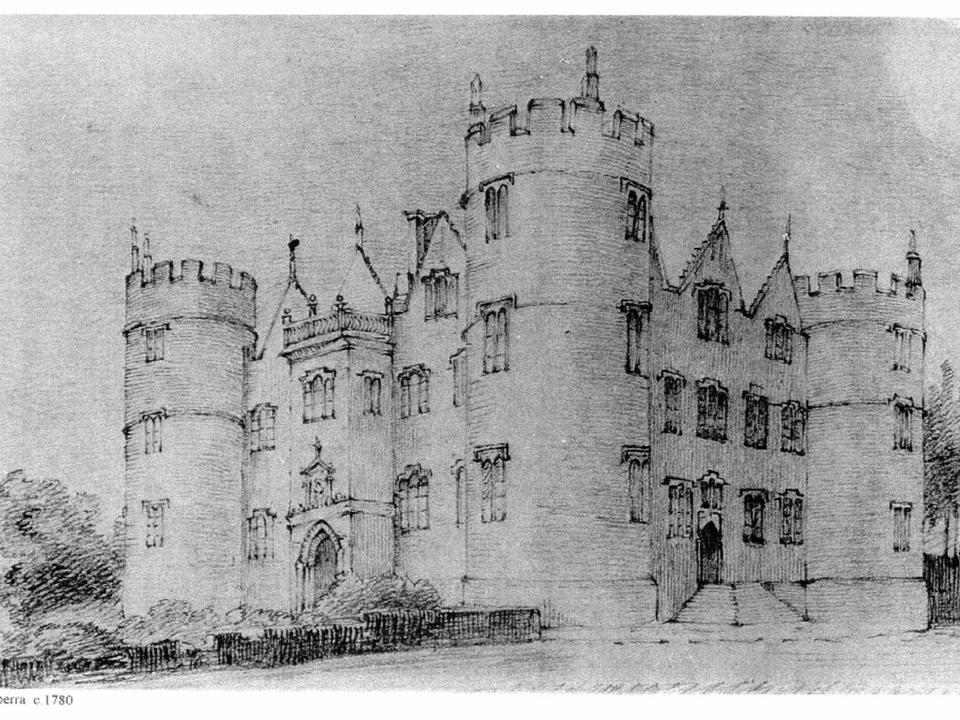|
The Ruperra Castle Preservation Trust was saddened to hear of the passing of Mark Girouard on the 16 August 2022. Mark was the acclaimed architectural historian and author of many famous books including the best-selling “Life in the English Country House”. When Ruperra Castle was threatened by unsympathetic development in 2008 (thankfully refused on appeal with his help, and that of other experts) he wrote of its importance:
“Ruperra Castle is not only one of the comparatively few outstanding Elizabethan and Jacobean country houses in Wales; it belongs to the very small and precious group of buildings expressing in architectural form the cult of chivalry which is one of the most remarkable features of the period. The cult first reached impressive expression in 1580, when Sir Philip Sidney, the 'parfait knight' of the Elizabethan age, staged a mock siege of the Queen, ensconced for the occasion in a pageant 'Castle of Perfect Beauty' at Whitehall. For the next fifty years or so a lavish series of tilts, pageants, fireworks displays, and masques staged by monarch or courtiers used the language of chivalry to symbolize and encourage devotion to the Crown, or celebrate dynastic marriages. Mimic castles frequently featured in these, along with tilting knights in armour. The cult spilled over into portraits of Elizabethan and Jacobean noblemen dressed for tilting, and appeared in literature, most notably in Philip Sidney’s best-selling romance The Arcadia, and Spenser's Faerie Queene, an allegorical celebration of Elizabeth and the knights who served her. Pageant castles had a history going back well into the Middle Ages. Neither then, nor in the Elizabethan or Jacobean periods, was any attempt made to make them resemble real castles. They were there to symbolize an attitude or frame of mind, and were meant to evoke the legendary days of King Arthur and his Round Table as much as, or more than, contemporary warriors and fortifications. Of their nature they were ephemeral, put up for a particular occasion and often taken down again without any kind of visual record being made. But the attitude of mind behind them spilled over into a group of more permanent buildings, above all actual country houses dressed up as 'castles' of the same symbolic nature as the pageant structures, and not built with any idea of being defensible. The surviving group is a very small one, and all the more valuable for that:
They may all relate to the great tilt which was held at Wilton in Wiltshire in 1604, to celebrate the marriage of William Herbert, Earl of Pembroke (the nephew of Philip Sidney) to Alathea Talbot (the niece of Sir Charles Cavendish of Bolsover). Thomas Morgan of Ruperra made his fortune as steward to the Earls of Pembroke, was a trustee of the marriage settlement, must have been present at the tournament and may well have participated in it, and was to be knighted at Wilton by James I when he came there on progress in 1623. Ruperra relates especially closely to Lulworth, in its configuration of four round comer towers, and In Its distinctive windows, with tall, thin arched lights. It is possible that the notable Arnold family, mason architects living at Charlton Musgrove in Somerset, may have worked there. William Arnold was the trusted employee of Robert Cecil, Earl of Salisbury, and his brother Godfrey was the chief mason at Lulworth; the way in which the central lights of the Ruperra windows are carried up above buildings in Dorset connected with the Arnolds, and their distinctive detail is found on its porch and surviving arches. In contrast to the Gothic echoes of towers and windows, the porch is of exquisite classical design; such a mixture of classical and Gothic is typical of the cult of chivalry, which drew its inspiration from heroes of classical, as well as medieval and mythical, times. The importance of Lulworth Castle, gutted and ruinous after a fire, was recognised when English Heritage acquired and restored it. If Ruperra Castle were to be allowed to decay beyond hope of restoration it would be a tragic loss to the architectural heritage of Wales.” Sign a petition to the Welsh Parliament asking for conservation management for scheduled monuments at risk, like Ruperra Castle. Read Mark Girouard’s obituary
0 Comments
Your comment will be posted after it is approved.
Leave a Reply. |
Archives
February 2024
Categories
All
|

 RSS Feed
RSS Feed
